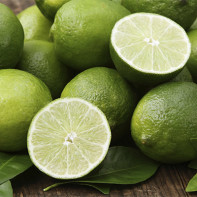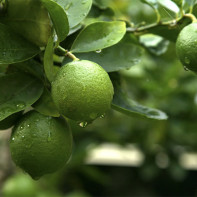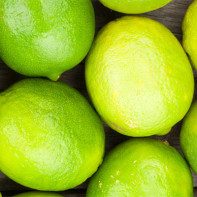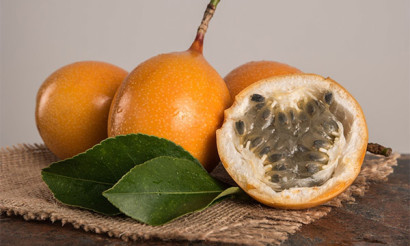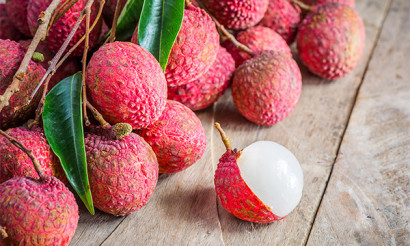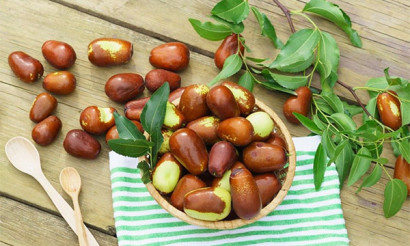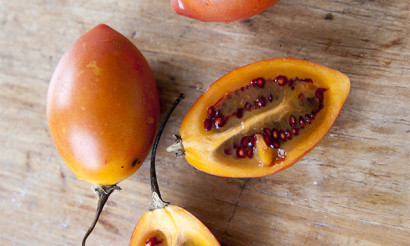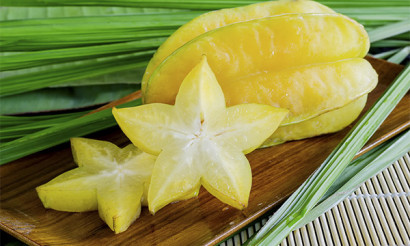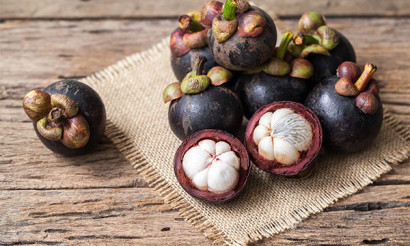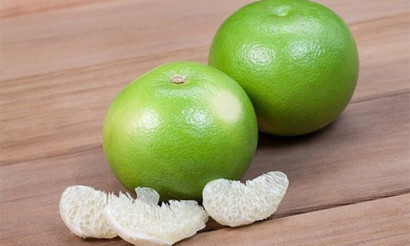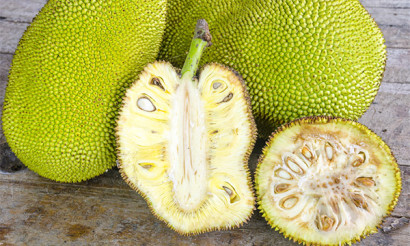Lime: composition, calories, useful properties and contraindications
Lime is a citrus fruit that has the aroma of a cool breeze of fresh wind. This comparison is not accidental, since the culture grows on the hills and prefers exactly the mountainous terrain. The fruit of the lime tree has a lot of useful properties and is used in various fields - from medicine and cosmetology to cooking and making alcoholic beverages.
- What is a lime and what does it look like
- Types
- What is the difference between a lime and a lemon
- Composition and calories
- Useful properties of lime
- General benefits
- For Women
- For Men
- During Pregnancy
- Breastfeeding
- For children
- Slimming
- The Lime Zest Benefits
- Benefits and harms of lime tea
- How to use lime with water
- Lime oil: properties and application
- Benefits of lime juice
- Benefits and harms of dried lime
- Usage of lime in traditional medicine
- For flatulence
- For mouthwash
- For Massage
- Lime in cosmetology
- For Face
- For Hair
- Health Hazards and Contraindications
- How to Choose and Store Limes
- How to eat limes
- What can be cooked from lime
- Interesting facts about lime
What is a lime and what does it look like?
Lime is an evergreen plant belonging to the Citrus genus and the Root family. The tree ranges in height from 1.5-5 m, it has a dense crown and branches covered with small prickles. If we talk about the fruit, the first thing worth noting is the similarity to lemons. They are ovoid in shape and have a green or yellow color. The Malacca Peninsula (Southeast Asia) is considered to be the homeland of this crop.
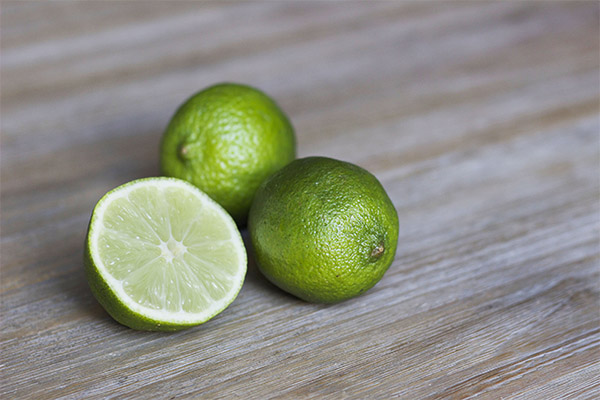
It is known that lime came to the Mediterranean as early as the 1st millennium B.C., but it was not actively cultivated until the second half of the 19th century. The plant feels comfortable in tropical climates, but the citrus is especially popular in areas with high humidity. It is important to note that when the temperature drops to zero or below, the lime trees die. The largest exporters are countries such as Mexico, Cuba, Egypt and India.
Types
- Sweet. Fruits are up to 8 cm in diameter. The taste is very sweet, the aroma is intense, with no acidity (due to the high concentration of sugar).
- Musky. Another name for the species is kalamansi. The fruit is very sour and tastes like both tangerine and lemon at the same time. The variety is very popular in the Philippines.
- Rangipur. The fruit is up to 5 cm in diameter. The flesh and skin has a dark orange color.
- Palestinian. The taste of the fruit is not very pronounced, the shape is rounded. The citrus is used to make soft drinks, including limeade.
- Kaffir. The plant reaches 3 m in height. The fruit contains practically no juice, so as a rule, only the zest of the fruit is used for cooking. This element gives food a characteristic rich flavor. Very popular in Thailand, Cambodia and Indonesia.
- Mexican. Another name is West Indian. The height of the plant is about 4.5 m, the form of growth is bushy. The juicy fruits have a strongly acidic taste and are about 6 cm in diameter. The fruit variety is used in the manufacture of various oils.
- Bearss. Other names are Persian and Tahiti. The plant is about 6 m tall. It has a wide popularity. The fruit contains practically no seeds.
What is the difference between a lime and a lemon
Although the lime and lemon are similar to each other, they have some differences. Each of the citrus fruits has its own distinctive characteristic taste and smell. Some researchers even have suggestions that the fruits are not "brothers" but fall under the definitions of "ancestor" and "descendant". If we follow this idea, we can say that the lime is one of the founders of the glorious citrus family, which has deservedly enjoyed wide popularity for centuries.
The color of the fruit of the lemon is yellow, while the lime is green. The first citrus has a sour taste, the second - with a bitterness. The flesh of the first is clear green-yellow, while the second is deep green. Unlike the lime, which bears fruit year-round, the lemon yields only once a year. It is also worth noting that the green fruit can be stored for about 2 weeks, the yellow one for several months. If we talk about the beneficial properties of the fruit, they have many similarities, so both are essential in the diet.
Composition and calories
In 100 g of the product contains:
- calories - 30 kcal;
- proteins - 0.7 g
- fats - 0,2 g;
- Carbohydrates - 7.7 g.
Lime contains vitamins A, B and C, as well as phosphorus, potassium, calcium, iron, thiamine and riboflavin. The product is rich in ascorbic acid, which supports blood vessels, pectin, which helps to eliminate toxins from the body, and essential oils, which normalize digestion.
Useful properties of limes
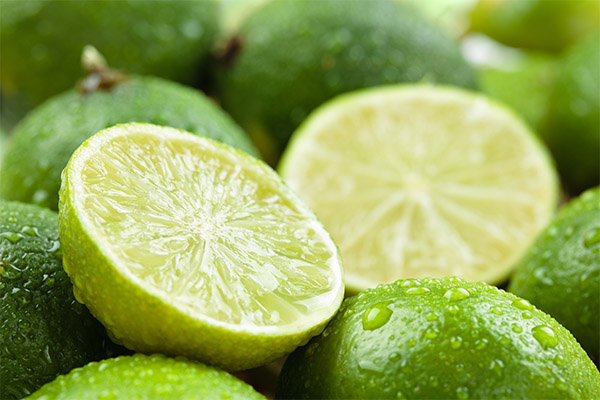
General benefits
- Supports healthy skin. Lime is rich in beneficial acids, so it can be used as a skin application that helps remove dead cells. Once in the body, the citrus juice stimulates the production of collagen, thereby rejuvenating the skin and improving its overall texture. Vitamin C protects the skin from various infections and helps get rid of rashes, pimples, and age spots. It also helps to fight skin damage caused by the sun and environmental pollutants. Its antioxidant and astringent properties can help slow wrinkles and shrink pores. Lime juice can also reduce the intensity of body odor.
- Supports digestive health. Lime has properties that cause the body to respond to the product with increased saliva production. In doing so, it can begin to be secreted before the citrus even enters the mouth. This effect helps with digestion. In addition, the substances in the fruit stimulate the digestive system and increase the secretion of digestive juices. It also activates the peristaltic movement responsible for the movement of food through the intestines. The acids present in the product help cleanse the excretory system. Lime fruit can relieve constipation. The juice of the citrus acts as an excellent laxative with no side effects. It is worth noting that drinks based on citrus fruits are used in some Asian countries as a means to improve digestion and get rid of GI discomfort. For example, lime juice drunk before meals can prevent the symptoms of heartburn and acid reflux.
- Fights infections. Consumption of limes protects the body from various germs, viruses and bacteria, including Helicobacter pylori and salmonella.
- Regulates sugar levels. The soluble fiber found in lime makes it effective in regulating blood glucose. This helps reduce sugar spikes, which are a serious health risk for diabetes. In addition, the fruit has a low glycemic index, which lowers the risk of unexpected spikes in glucose levels.
- It prevents heart disease. Thanks to the vitamin C contained in the citrus, the lime has protective properties that help fight coronary heart disease. Soluble fiber and limonin help lower blood pressure. This complex reduces inflammation of blood vessels and helps reduce the risk of heart disease. Potassium and magnesium improve blood circulation and heart health, while lowering the risk of stroke. It helps slow the progression of heart disease and atherosclerosis by reducing fat in the arteries. Hesperidin, a flavonoid present in the fruit, reduces cholesterol and triglyceride levels in the body, which also has a positive effect on heart health.
- Fights cancer. Lime has anti-cancer properties. This citrus is especially useful for cancer therapy. The reason for this is its ability to absorb free radicals and reduce oxidative stress. Flavonoids, flavones, triterpenoids and limonoids contained in the product are active and powerful substances in the fight against the disease. They can stop the growth and spread of cancer cells and prevent colon, breast, prostate, pancreatic, stomach, lung, kidney and blood cancers.
- Relieves inflammation. Citrus fruits have anti-inflammatory properties, so they can be used for inflammatory conditions. One of the causes of arthritis is excessive accumulation of uric acid in the body. The citric acid contained in lime is a solvent just right for dissolving uric acid. When you increase citric acid in the body decreases the concentration of uric acid.
- Is the prevention of kidney stones. The citric acid in lime juice can prevent and in some cases even get rid of kidney stones. Research has shown that regular consumption of citrus lemonade significantly reduces the risk of kidney stones.
- Strengthens the immune system. Lime supports the immune system, helps prevent a variety of infections from entering the body and acts as a preventative for diseases such as malaria, diarrhea and pneumonia. In addition, vitamin C helps fight colds and boosts the body's overall immunity.
- It helps in the absorption of iron. The substances in limes help the body better absorb iron. People who suffer from symptoms of iron deficiency anemia, such as dizziness, brittle nails, hair loss and fatigue, are highly advised to look into limes, as this fruit can help alleviate these symptoms.
- Treats peptic ulcers. The citrus contains special compounds, flavonoids, which have antioxidant, anticarcinogenic, antibiotic and detoxifying properties. Lime acids interact with gastric juice, resulting in alkaline reactions. This helps stimulate the healing process of ulcers.
- Useful for the eyes. Lime's antioxidant properties protect the eyes from yellow spot degeneration. In addition, flavonoids protect them from infections.
- Reduces body temperature. Lime has antipyretic properties, so it can be used as a natural remedy to lower body temperature.
- Useful for gout. There are two main causes of gout. The first is the accumulation of free radicals, and the second is an excess of toxins, especially uric acid. Thanks to antioxidants, vitamin C and flavonoids, lime can fight the negative effects of these processes.
For women
Lime is useful for women for several reasons. The flavonoids present in the citrus take part in the processes associated with the synthesis of collagen and elastin, promoting rejuvenation and smoothing the skin. The fruit stands to protect the skin from damage that can be triggered by solar radiation. It is rich in organic acids that accelerate lipid (fat) metabolism and stimulate the burning of calories. The product also helps normalize the female hormonal background, disorders of which often manifest themselves in skin problems and excessive weight.
Lime juice is widely used by professional cosmetic manufacturers, as well as simply in home recipes as a means of whitening, cleansing and drying the skin. The only thing women should pay attention to when consuming this fruit is moderation. Since an overabundance of vitamin C in the body can cause allergic reactions.
For men
Men can also benefit from the useful properties of the lime. Citrus will help prevent the occurrence of diseases associated with the genitourinary system. For example, it will reduce the risk of prostatitis, maintain the health of the reproductive system. Especially the fruit is useful in cases where disorders are associated with stressful conditions, exhaustion of the body and impaired circulation.
Minerals and flavonoids in the fruit will help build muscle mass, increase physical endurance, and strengthen the musculoskeletal system. The cleansing properties of the product are useful for those who work in harmful industries or jobs in a polluted environment.
It is worth knowing that with excessive consumption of lime can weaken testosterone production and worsen phosphorus-calcium metabolism.
In pregnancy
Limes are a rich source of beneficial vitamins and minerals that pregnant women need. Nevertheless, during this period, you should follow some rules of citrus consumption, so that they do not harm your health. The introduction of this product should be gradual, and it is better to start with freshly squeezed juice. Fruit juices are very useful at this time, because they help to keep the body of the pregnant woman in a healthy state, and provide nutrients.
Some women have an acute desire to include citrus fruits in their diet. Sometimes this can be caused by a vitamin C deficiency in the body. In this case, the lime comes to the rescue, because, like most citrus fruits, it is an excellent source of vitamin C. The consumption of lime juice during pregnancy is approved and even recommended by many experts, because this product does not cause any side effects.
In addition to the listed benefits, the fruit has a number of other useful properties. Constipation and stomach upsets are an integral part of pregnancy. Lime soothes irritation of the intestines and prevents constipation and diarrhea. Regular consumption of the fruit juice eases the defecation process and helps with digestive disorders. Citrus is also rich in antioxidants, which help eliminate toxins and free radicals from the body. Most importantly, it can protect against colds, which are especially dangerous during pregnancy.
Lime has a beneficial effect not only on the mother, but also on her baby. The fruit contains quite a lot of potassium, which helps in the development of bone tissue, as well as promotes the development of brain and nerve cells of the fetus. High blood pressure during pregnancy can lead to pre-eclampsia, a condition that threatens the life of the fetus and increases the likelihood of preterm birth. Lime juice will lower blood pressure and help avoid unpleasant consequences.
Citrus will also get rid of a common problem - swollen feet. Regular consumption of fruit juices will prevent heartburn and bloating. As a good source of calcium and magnesium, lime helps in the treatment of asthma, colds, scurvy and fevers, promotes proper absorption of iron and prevents anemia during pregnancy.
When breastfeeding.
Breastfeeding mothers are not recommended to include lime in their diet, as it contains quite a lot of citric acid, which can provoke upset stomach in the baby. Baby, still weak gastrointestinal tract will not be able to cope with the acidic components of the product, which will lead to unpleasant symptoms, which are very undesirable in the early months. Nevertheless, you should not completely exclude citrus fruits from your diet. A minimal amount of fruit can still be eaten, but it is necessary to monitor the condition of the child.
For kids
Since lime is oversaturated with trace elements, it is not recommended to include it in children's food until the age of 3 years. After reaching the age of three, the fruit is already considered a necessary element of the child's diet, provided there are no allergic reactions and contraindications. The citrus fruit contains calcium and vitamin D, substances that are necessary for the body to build healthy bones. B vitamins and magnesium are involved in the processes related to the development of the central nervous system.
Lime is especially useful in case of any infectious disease. Like all citrus fruits, it has bactericidal properties and helps to kill bacteria and viruses.
Since the product may be too acidic for a child, it can be diluted with water. Such diluted drinks can be consumed internally or used to gargle the mouth and throat.
The fruit should be pitted before drinking, as it can cause stomach upset or food poisoning.
When losing weight
The substances contained in limes can help in the weight loss process. Citric acid is an excellent fat burner. The composition of this product contains only 30 kcal per 100 g. In addition, it contains many vitamins, minerals and organic acids, fiber, carbohydrates, a small amount of protein and a lot of water.
Usually, for weight loss, lime-based drinks are prepared. The most popular is a mixture of freshly squeezed juice and water. Such a cocktail is an effective aid for getting rid of extra pounds. Lime water is an excellent source of vitamin C. Lack of this vitamin in the diet can negatively affect weight loss. Vitamin C plays an important role in helping the body break down fats.
The benefits of lime zest
Lime zest has a number of unique culinary characteristics, has an original green color and sour taste with a bitterness, as well as a delightful aroma. But beyond that, it has a healing effect on the body. The zest can be used as a prophylactic of viral and colds. It will have an antiseptic and antibacterial effect, will help in case of purulent angina and throat redness. It contains ascorbic acid, which will increase the body's defenses and support the immune system.
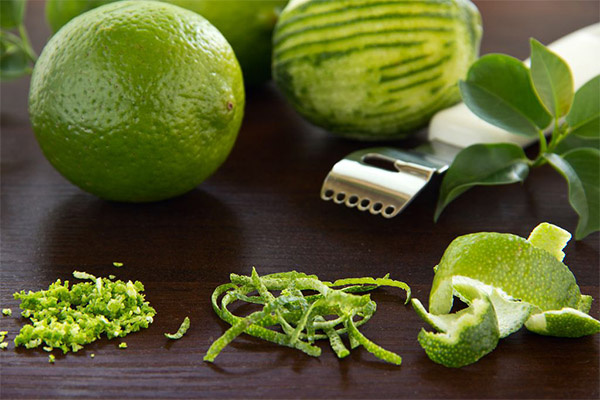
It is worth noting the benefits of this product and for the gastrointestinal organs. Acids and oils in the composition will help speed up the metabolism, increase appetite and stimulate the production of gastric juice. The peel will also have a beneficial effect on the nervous system. It will relieve depression and stress, reduce irritability and nervousness. The peel will also support kidney function, improve blood composition and accelerate the loss of extra pounds. Another important property is that lime zest can help normalize the frequency and strength of the heartbeat. It is sometimes used as a prophylactic for gum and dental disease because it can prevent tooth decay, plaque and tartar buildup.
Benefits and harms of lime tea
Tea with lime will help to strengthen the immune system and improve the functioning of all body systems. In addition, the drink has a number of useful properties that can help the body to cope with various problems. It can be used in such situations:
- for kidney disease;
- as a prophylactic against cardiovascular diseases;
- in the case of depression and bad moods;
- for chronic fatigue.
However, tea also has some contraindications. For example, it should not be consumed:
- in case of gastritis;
- high levels of acidity in the stomach;
- allergies;
- pancreatitis;
- peptic ulcer disease.
The seeds of the fruit should not be added to the tea, as they contain poisonous substances. Also, you should not drink this drink before going to bed, as in the morning there may be dark circles under the eyes and swelling.
How Lime and Water Works
Lime has a pungent sour taste, so including it in your food in its natural form is somewhat problematic. To make lime juice more palatable, it can be diluted with water. Such a drink will bring invaluable benefits to the body. It will rejuvenate and moisturize the skin, improve digestion, and support the body in fighting viruses and bacteria. In addition, it can be used during the period of weight loss, because it enriches the body with substances that accelerate the metabolism, and also helps to eliminate toxins and waste from it. The remedy will be useful in cases of heart disorders, in cases of various inflammations and in cases of high blood sugar.
Lime oil: properties and uses
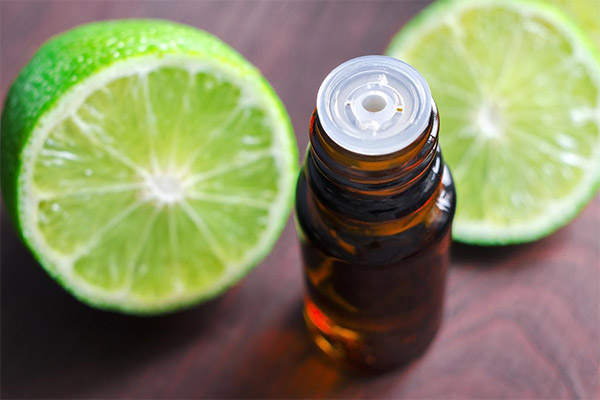
An interesting fact is that the medicinal properties of lime oil differ from those of lemon oil. Lime oil has tonic, bactericidal, antiviral, antiseptic, regenerating and soothing properties. It is used to treat colds, it helps relieve symptoms and gets rid of pockets of inflammation. This product can also be used for sore throats, to speed up the treatment of upper respiratory tract problems. It has beneficial effects on virtually every system of the body. For example, the product can help with neurosis and tachycardia, stress and psychosomatic disorders.
Benefits of lime juice
When comparing lime juice and lemon juice, you will notice that the former has a thicker, richer, more acidic and pungent consistency, with a slight bitterness. Despite the sour taste, the drink will not irritate the mucous membrane of the stomach, and will not damage the dental enamel. Juice helps to reduce the level of "bad" cholesterol in the blood and reduces the risk of atherosclerosis. With regular consumption, cells will be able to stay young longer, so the aging process of the body will be slowed down. Juice contains valuable acids - apple acid and citric acid - they contribute to better absorption of iron and participate in the process of hematopoiesis. Ascorbic acid will help whiten tooth enamel.
Benefits and harms of dried limes
Dried lime has a number of health benefits that overlap with those of fresh citrus. It:
- Helps with swelling and varicose veins;
- alleviates depression;
- Improves metabolism;
- normalizes sleep, appetite and digestion;
- helps to eliminate toxins from the body;
- strengthens capillary walls;
- Relieves inflammation and skin irritations;
- fights toxicosis.
Dried lime has many beneficial properties, but there are contraindications to its use. It should not be used:
- in case of high acidity of stomach juice;
- Intestinal and stomach ulcers;
- pancreatitis;
- problems with dental enamel;
- gastritis;
- Breast-feeding;
- Allergic reactions.
The product is also harmful to children under 3 years of age.
The use of lime in folk medicine
In flatulence
- Grated pulp of ginger root (1 tsp.) Mix with lime juice (1 tsp.).
- Take immediately after a meal.
To rinse the mouth
- Add lime oil (1 drop) to water (1/2 cup) and mix.
- Rinse your mouth, but do not swallow.
- Rinse your mouth with water at the end.
For massage
- Add vegetable oil (10 g) to lime oil (3-5 drops) and mix.
- The remedy is used for massages.
Lime in cosmetology
Lime has a rich chemical composition, so it can be used as a component in a variety of cosmetics. If you regularly use lime, it will help to reduce skin oiliness, get rid of the ugly shine, tighten pores and make them invisible.
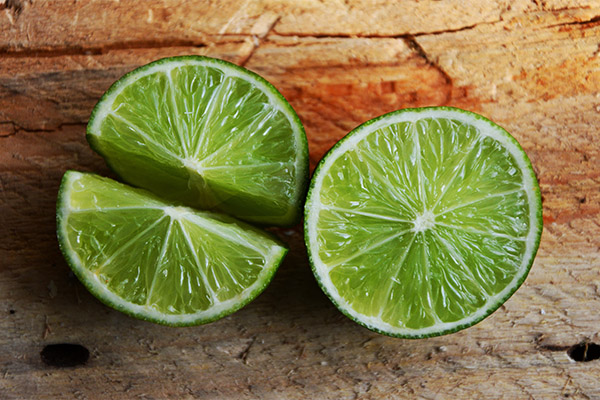
For Face
Purifying Mask
- Mix crushed lime zest (1 tsp.) with liquid honey (2 tbsp.) and a few drops of tea tree.
- Apply the mask to the skin for 15 minutes.
- Rinse off with cool water.
For Dry Skin
- Lime juice (1 tbsp.) mixed with cottage cheese (1 tbsp.) and olive oil (1 tsp.).
- Apply the mask to the face for 15 minutes.
- Rinse off with water.
Smoothing mask.
- Mix olive oil (2 tsp.) with lime juice (1/2 tsp.) and whisk.
- Apply the mixture to the skin of the face for 30 minutes.
- Rinse off with water.
For enriching cosmetic products
Add lime oil (4-6 drops) to the base (10 g - it can be almond, macadamia or apricot kernel oil, face lotion, night cream).
For Hair
For hair loss
- Whisk egg yolk (1 egg).
- Finely chop banana (1/2 Piece).
- Mix egg yolk with banana and beat in blender.
- Add beer (1/2 cup) and honey (1 tbsp.) and mix well.
- Apply the mask on the scalp.
- Hold for 2.5 hours.
- Wash your hair with cool water and shampoo (you can wash twice).
For shiny hair
- Put jojoba oil (25 ml) on a water bath and warm it.
- Add honey (2 tbsp.) to the lime juice (1 tbsp.) and mix.
- Apply to the hair, wrap the head with a bag (plastic) and a towel on top.
- Wait 30 minutes.
- Rinse hair with warm water and shampoo.
Hair rinse
- In water (2 liters) add lime juice (1/2 pc.) and mix.
- Means rinse hair after shampooing (do not need to wash again).
Health Hazards and Contraindications
Lime has some contraindications. For example, infants may have allergic reactions when the mother consumes citrus. It is also necessary to know that the pips, which are in the fruit, are poisonous. In addition, the fruit is rich in substances that can provoke exacerbations of various gastrointestinal diseases.
Here is a list of diseases in which lime is contraindicated for use:
- acute nephritis;
- pancreatitis;
- hepatitis;
- cholecystitis;
- colitis and enterocolitis;
- ulcers.
If you have these diagnoses, you should consult your doctor before consuming the citrus.
How to choose and store limes
As the lime is a perishable product, it is necessary to be particularly careful in selecting the fruit even at the time of purchase. To do this, the fruit needs to be examined carefully. Good quality fruit has a green, slightly yellowish color and should be slightly shiny. If there is a matte color on the rind, this indicates that the fruit is overripe. Pressing on the fruit with your fingernail, the peel of a ripe lime should straighten, if just remains a dent, the product is considered overripe.

To store the whole fruit, consider that on a shelf in the refrigerator they can last about a week. It is advisable to place them in the refrigerator (in the fruit compartment) and store them at about 7-8°C, this way they will be fresh for about 2 weeks. Cut limes should be wrapped in a paper towel, then add vinegar (a few drops) and put it on a plate in the refrigerator. The fruit will be able to stay fresh for about 7 days.
How to Eat a Lime
The lime can be consumed in the same way as the lemon. For example, the fruit can simply be cut into slices and sprinkled with sugar. This dish is a great addition to salads and desserts. For those who like spicy sensations, you can use another method. To do this, you just need to remove the skin from the citrus and eat it, taking it apart into slices. It is important to note that the lime must be fresh, because after processing it loses most of its useful properties.
What to make with limes
Lime is great for making herbal teas and tonics. In addition, the fruit is used to make lemonades, as well as various alcoholic and non-alcoholic cocktails and drinks. Lime juice and zest are often used to make marinades for meat (the juice softens meat and improves the taste of cooked dishes). Pickled lime is an integral part of Indian cuisine. Citrus marmalade is popular in Australia.
Interesting facts about limes
- Scurvy (a disease caused by vitamin C deficiency) was common among sailors in the 19th century. Because lemon was expensive, lime was chosen as the second best natural cure for the disease. British sailors were forced to consume one fruit a day to prevent the development of scurvy.
- Lime can be used as a substitute for lemon because both fruits have a sour taste and similar vitamin content.
- Lime essential oil extracts are used in the cosmetic industry to make flavorings. The citrus flavor typical of lime is popular and often used in the production of cleansers and in aromatherapy.
- Lime pickles are an integral part of Indian cuisine.
- Lime is a common ingredient in authentic Mexican, Vietnamese and Thai dishes.
- Lime soup is a traditional dish of the Mexican state of Yucatan.
- If a person's skin is exposed to ultraviolet radiation after contact with lime peels or juice, a reaction called phytophotodermatitis can occur, causing darkening of the skin, swelling, or even blistering.
- Lime is a perennial plant with a lifespan of more than 10 years.
«Important: All information on this site is provided for informational purposes only. for informational purposes only. Check with your health care professional before using any recommendations. health care professional before using any of the recommendations. Neither the editors nor the authors shall be liable for any possible harm caused by materials."


